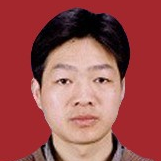Recent Advances in the Internet of Things (IoT): Architecture, Protocols and Security, 2nd Edition
A special issue of Applied Sciences (ISSN 2076-3417). This special issue belongs to the section "Computing and Artificial Intelligence".
Deadline for manuscript submissions: 20 July 2024 | Viewed by 1501
Special Issue Editor
Interests: network security; wireless network; networking protocol; Internet of things (IoT); blockchain; cryptography protocol
Special Issues, Collections and Topics in MDPI journals
Special Issue Information
Dear Colleagues,
As an emerging technology, the Internet of Things (IoT) has become popular. The Internet of Things (IoT) is aimed at enabling the interconnection and integration of the physical world and cyber space. It represents the trend of future networking and leads the third wave of the IT industry revolution. This Special Issue aims at publishing a collection of research contributions illustrating the recent achievements in all aspects of the development, studying, and understanding of the Internet of Things. We hope to establish a collection of papers that will be of interest to scholars in the field. Contributions in the form of full papers, reviews, and communications about related topics are very welcome.
Prof. Dr. Guangquan Xu
Guest Editor
Manuscript Submission Information
Manuscripts should be submitted online at www.mdpi.com by registering and logging in to this website. Once you are registered, click here to go to the submission form. Manuscripts can be submitted until the deadline. All submissions that pass pre-check are peer-reviewed. Accepted papers will be published continuously in the journal (as soon as accepted) and will be listed together on the special issue website. Research articles, review articles as well as short communications are invited. For planned papers, a title and short abstract (about 100 words) can be sent to the Editorial Office for announcement on this website.
Submitted manuscripts should not have been published previously, nor be under consideration for publication elsewhere (except conference proceedings papers). All manuscripts are thoroughly refereed through a single-blind peer-review process. A guide for authors and other relevant information for submission of manuscripts is available on the Instructions for Authors page. Applied Sciences is an international peer-reviewed open access semimonthly journal published by MDPI.
Please visit the Instructions for Authors page before submitting a manuscript. The Article Processing Charge (APC) for publication in this open access journal is 2400 CHF (Swiss Francs). Submitted papers should be well formatted and use good English. Authors may use MDPI's English editing service prior to publication or during author revisions.
Keywords
- Internet of Things (IoT)
- privacy and security
- blockchain
- cryptography protocol





